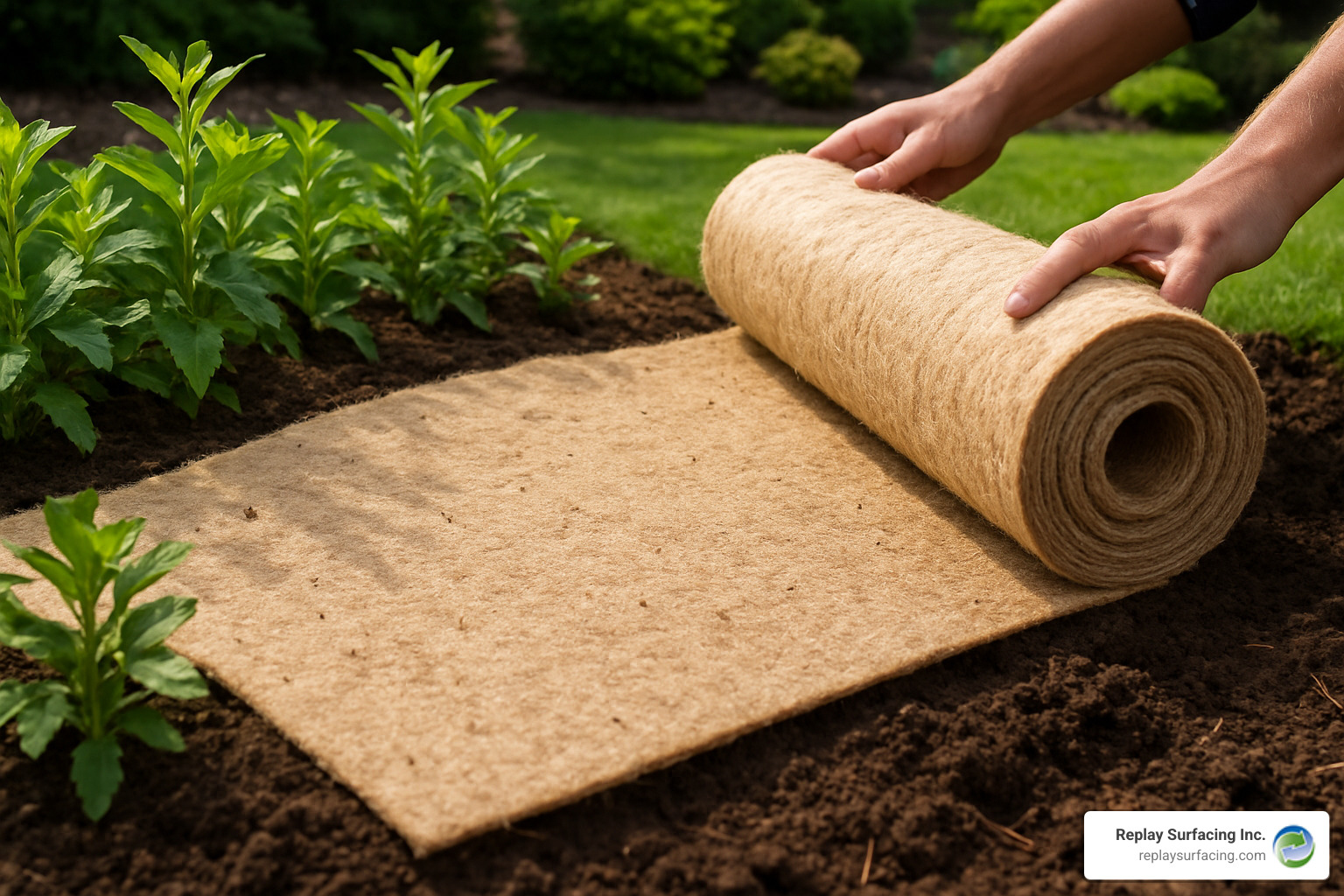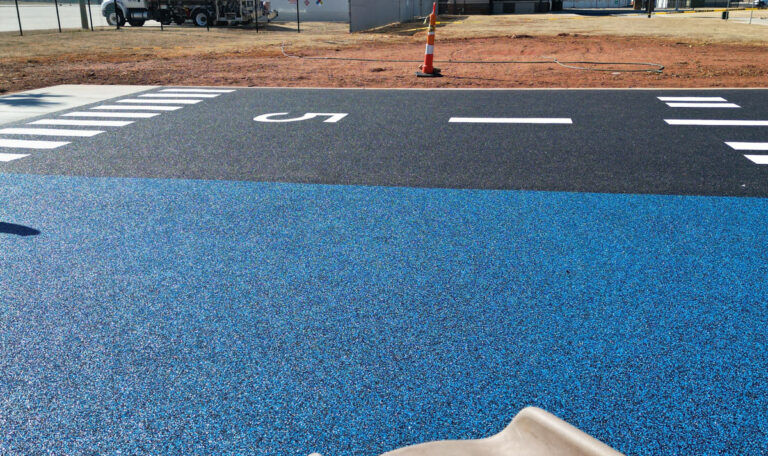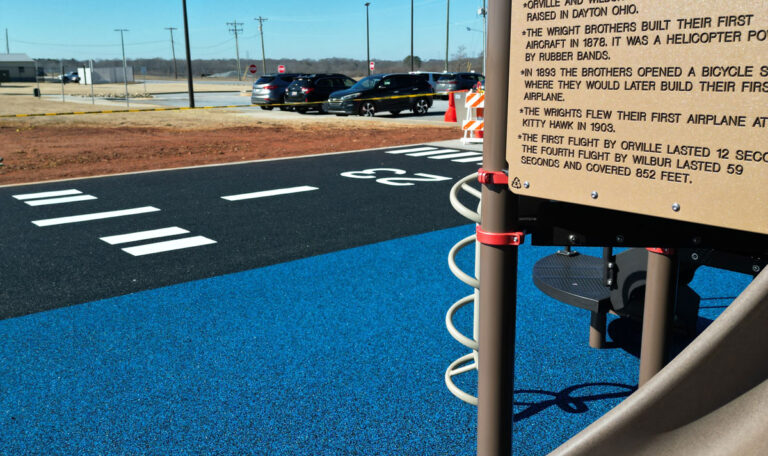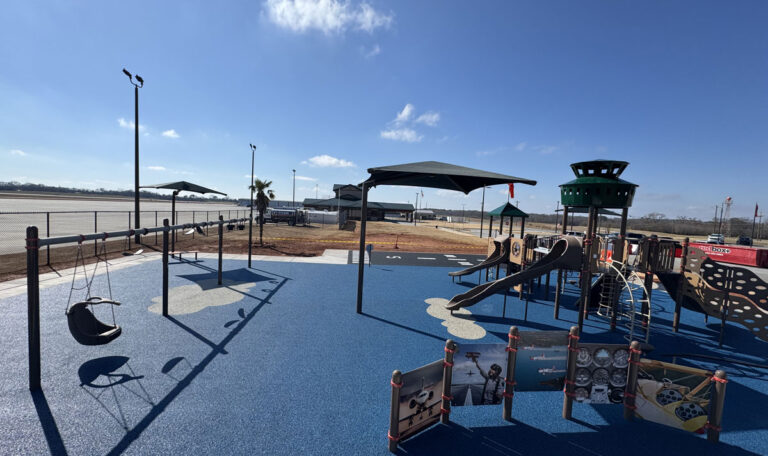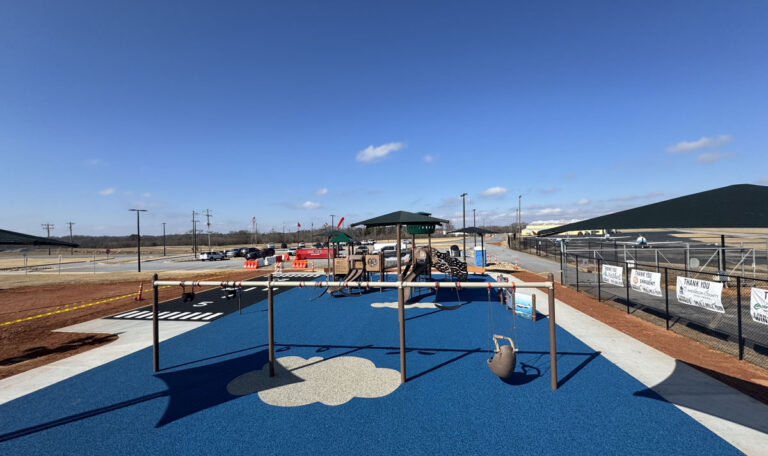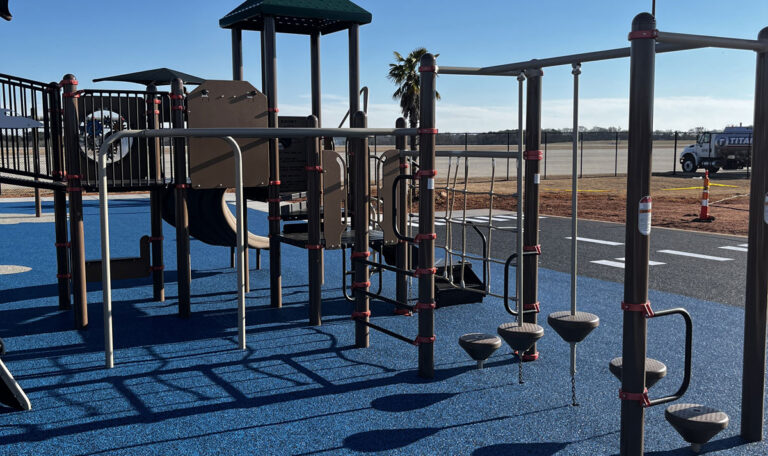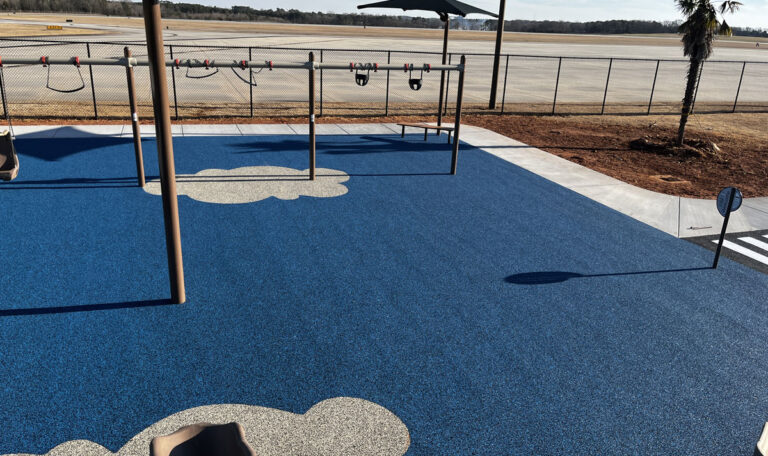Keep Your Garden Beautiful With Weed-Fighting Ground Covers
A mulch mat roll is your secret weapon against garden chaos. These pre-fabricated sheets are designed to keep weeds at bay, lock in precious soil moisture, and give your landscape that professionally maintained look—all without the backbreaking work of constant maintenance.
Think of Sunday afternoons spent enjoying your garden rather than battling weeds! Mulch mat rolls create an instant barrier that stays put through wind, rain, and seasonal changes. Unlike loose mulch that scatters and thins over time, these durable sheets maintain their position and effectiveness month after month.
Beyond just fighting weeds, these garden heroes work overtime to protect your soil. They regulate ground temperature (keeping roots cooler in summer and warmer in winter), prevent erosion during heavy rains, and help retain moisture so you’ll water less frequently. For busy homeowners and property managers alike, they deliver a clean, uniform appearance with minimal upkeep.
The environmental benefits are impressive too. Today’s mulch mat rolls come in options to match any eco-conscious gardener’s preferences. Choose from rolls made with 80% recycled tire rubber for maximum durability, or opt for biodegradable natural fiber mats that eventually break down and enrich your soil.
| Mulch Mat Roll Type | Best For | Typical Lifespan | Average Cost |
|---|---|---|---|
| Recycled Rubber | High-traffic areas, playgrounds | 5+ years | $340-$370 per 3’×20′ roll |
| Coir/Coconut Fiber | Erosion control, slopes | 6-24 months | $90-$135 per roll |
| Natural Fiber | Garden pathways | 1-2 years | $45-$60 per 38″×100′ roll |
| Recycled Cardboard | Sheet mulching, soil building | 6-12 months | $30-$40 per 4’×250′ roll |
Hi there! I’m Landon Olson, a mechanical engineer with years of experience in the sustainability and safety surfacing industries. I’ve helped countless gardeners, landscapers, and property managers find the perfect mulch mat roll solutions for their unique situations. Whether you’re tackling a small backyard garden or managing extensive commercial grounds, there’s a mulch mat option that will save you time, money, and effort.
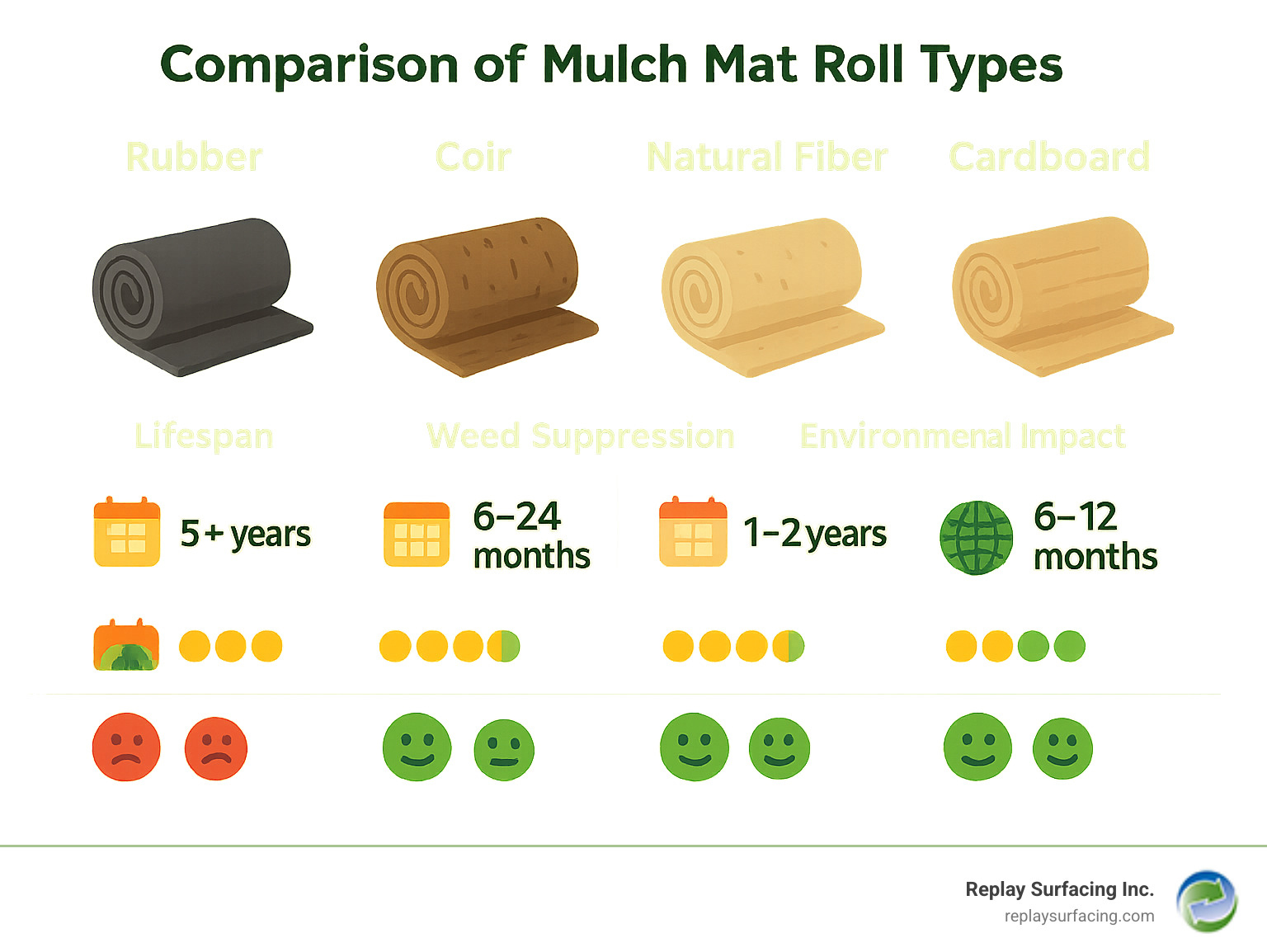
Not sure where to start? Here’s a simple guide to related mulch mat roll products that might help with your landscaping project:
– Garden rubber stepping stones for creating attractive pathways
– Rubber pavers for high-traffic areas that need extra durability
– Outdoor walkway mats for quick, removable solutions
Let’s explore the different types of mulch mats available and find the perfect match for your garden needs!
Recycled Rubber Mulch Mat Roll (Top Pick for Durability)
Looking for a garden solution that actually lasts? Our recycled rubber mulch mat rolls are the toughest kids on the block. At Replay Surfacing, we’ve given thousands of old tires a second life as garden guardians that outlast traditional mulch by years.
What makes these rubber mats special is their impressive thickness. Unlike flimsy landscape fabric that aggressive weeds punch through like paper, our rubber mats stand a full inch thick—double what most competitors offer. This substantial barrier keeps weeds at bay while still letting water and nutrients reach your soil.
I love hearing from customers like Paul and Vicki who told us, “The rubber mulch mats eliminated our constant garden maintenance. And bonus—no more neighborhood cats using our mulch as their personal bathroom!”
The natural shock absorption of rubber makes these mats perfect for high-traffic areas where you want a little cushion underfoot. Garden pathways, playground borders, or seating areas all benefit from the rubber’s natural bounce that stays in place season after season.

Sizes & Specs at a Glance
We offer several options in our recycled rubber mulch mat roll lineup:
- Rectangular Rolls: 3 ft × 20 ft (covers 60 square feet)
- Square Mats: 4 ft × 4 ft (perfect for surrounding trees)
- Weight: 60-125 lbs depending on size
- Thickness: A substantial 1 inch (twice what others offer)
- Material: At least 80% recycled tire rubber
- Colors: Basic black or premium options like cypress, green, yellow, rustic, and jungle
- Permeability: Water goes through, weeds stay out
These mats are hefty—a 3×20 ft roll weighs about 120-125 pounds—which means they stay put even when the wind picks up. No more chasing lightweight fabric across your yard during a storm!
Want more details or custom sizes? Visit our More info about Rubber Mulch Mats page.
Installing a mulch mat roll the easy way
Getting your rubber mulch mat roll in place takes a bit of effort upfront, but you’ll thank yourself for years to come. Here’s how to do it right:
Start by clearing the area completely—remove weeds and rake the soil level. For a professional look, dig down about an inch to create a slight depression where your mat will sit flush with the surrounding landscape.
I always recommend laying landscape fabric underneath as a base layer. This prevents soil from pushing up through the mat over time—a small step that makes a big difference.
Next comes the heavy lifting. Position your rubber mat in the prepared area (grab a friend for help with larger rolls). For custom shapes or fitting around obstacles, mark your cutting line with a straightedge, score it with a utility knife, and finish the cut with an irrigation saw. Always wear gloves and eye protection when cutting rubber!
In areas with high winds or foot traffic, secure the edges with 8-10 inch landscape spikes. This keeps everything firmly in place.
As landscape professional James S. told us, “Thanks for the prompt delivery. I checked in with my client last week and they absolutely love the rubber mulch product.”
For step-by-step installation guides, check out our More info about Installing Rubber Mulch page.
Performance & Maintenance
The magic of rubber mulch mat rolls becomes clear within the first growing season. While traditional mulches break down and need yearly replacement, our rubber mats maintain their good looks and functionality for years.
These mats excel at blocking nearly all weeds thanks to their dense, thick construction. Rain and irrigation water flow right through to plant roots, while the rubber helps moderate soil temperature extremes in both summer and winter.
Unlike organic mulches that fade quickly, our UV-stabilized rubber maintains its color for years. Maintenance couldn’t be simpler—just hose off any debris or leaves that collect on top. The clean, defined edge also protects tree trunks from accidental mower damage.
One of our Pennsylvania customers summed it up perfectly: “Mowing clippings blow right off and water flows through without any weeds popping up. When I need to plant something new, I just use tree pruners to cut a hole. I’m saving a fortune on annual mulching!”
With proper installation, your rubber mulch mat roll will perform beautifully for at least 5 years—making it not just environmentally responsible, but economically smart too.
Eco-Friendly Coir Mulch Mat Roll (Best for Erosion Control)
If you’re a gardener with sloping terrain and an eco-conscious heart, coir mulch mat rolls might just be your new best friend. Made from coconut husk fibers that would otherwise end up as waste, these natural mats tackle erosion while keeping your environmental values intact.
What makes these mats special is their clever open-weave design. Standard BioD-Mat 40 coir mats have about 65% open area with a weight of 460 g/m² (that’s 13.6 oz/SY for those who prefer imperial). This open structure lets you plant directly through the material while it holds your hillside firmly in place.
“I was skeptical at first,” admits Jamie, a homeowner in Seattle with a troublesome backyard slope. “But these coir mats kept everything in place through our rainy season while my native plants got established. Now they’re breaking down and feeding my soil—it’s a win-win!”

The beauty of coir mulch mat rolls is their dual-purpose nature—they immediately stop soil erosion while gradually decomposing to enrich your garden. Mother Nature’s version of having your cake and eating it too!
Sizes & Specs at a Glance
Shopping for coir mulch mat rolls is pretty straightforward. Most come in 4 ft × 100 ft rolls, which makes them easy to handle and perfect for most residential projects. Their weight varies based on density (typically between 460-980 g/m²), with heavier mats providing more robust protection.
The open area in these mats ranges from 38-65%, depending on which product you choose. Lighter BioD-Mat 40 options with more open space (65%) work wonderfully for gentle slopes where you want plants to pop through quickly. For steeper, more challenging terrain, the heavier BioD-Mat 90 (weighing in at 980 g/m² with 38% open area) provides sturdier, longer-lasting protection.
Unlike synthetic options, these natural fiber mats have a service life of 6-24 months, depending on your local climate. That’s not a drawback—it’s intentional! They’re designed to last just long enough for your plants to establish themselves, then gracefully break down and become part of your soil.
Curious how these renewable materials stack up against other options? Check out the Latest research on renewable materials for an interesting comparison.
Installing a mulch mat roll on hillsides
Getting coir mulch mat rolls properly installed on a slope isn’t rocket science, but it does require a bit of technique:
Start by cleaning up your slope—remove sticks, rocks, and other debris that might create air pockets under your mat. Then dig a small trench at the top of the slope (think of it as a little anchor point for your mat).
Always begin at the top and roll downhill, letting gravity help you maintain good soil contact. This is definitely a two-person job on larger slopes—trust me, I’ve tried it solo and ended up looking like I’d wrestled with a giant coconut husk!
Securing your mat properly is crucial. Use wooden or metal stakes every 2-3 feet, with extra attention to the top edge and middle sections. For steeper slopes (approaching that challenging 1:1 grade), don’t be shy with those anchors—more is better.
For existing plants, simply cut X-shaped slits in the mat to accommodate them. New plantings? The open weave often allows you to plant right through it—no cutting required.
When connecting multiple rolls, overlap the edges by 6 inches and secure with additional anchors. This prevents water from getting under the mats and causing more erosion—exactly what we’re trying to prevent!
Pros & Cons
The benefits of coir mulch mat rolls are impressive. They’re 100% natural and biodegradable, actually improving your soil as they break down. Their natural brown color blends beautifully into landscapes, and they excel at both erosion control and moisture retention. For organic gardeners, they’re a perfect fit with sustainable principles.
That said, they’re not without limitations. Their 6-24 month lifespan means they’re not a permanent solution (though that’s by design). They won’t stand up to foot traffic like synthetic options, and in particularly wet climates, they may decompose faster than expected. They also cost more than basic landscape fabric, and proper anchoring is non-negotiable on slopes.
“We’ve found coir mats to be the perfect transitional solution,” shared a landscape architect working on a hillside restoration project in Raleigh, NC. “They hold the slope while plants establish, then feed the soil as they break down. It’s exactly what we needed for this sensitive watershed project.”
For those looking to balance immediate erosion control with long-term soil health, coir mulch mat rolls offer a solution that works with nature, not against it—something we at Replay Surfacing deeply appreciate as fellow recyclers and sustainability advocates.
Natural Fiber Pathway Mulch Mat Roll (Walk-Friendly Choice)
Looking for something you can actually walk on without guilt? Natural fiber mulch mat rolls are the perfect middle ground for garden pathways that need to handle foot traffic while still being kind to the planet. Made from 100% recycled and bio-based fibers, these sturdy mats create defined walkways that keep weeds at bay and mud off your boots.
Unlike flimsy landscape fabric that tears under your first footstep, PathGuard Natural Fiber Rolls are a substantial .040 inches thick. This extra heft means you can stroll between your tomatoes and zucchini without punching through or shifting the material with every step.

One community gardener told us, “Before these pathway mats, the space between our beds turned into a muddy obstacle course after every rain. Now we can harvest in sandals even the day after a downpour!” The beauty of these fiber rolls is that they stand up to regular walking while eventually returning to the earth when their work is done.
Key Specifications
A standard natural fiber mulch mat roll weighs about 45 pounds and typically comes in a 38-inch × 100-foot roll (though 50-foot options exist for smaller projects). At .040 inches thick, they’re substantially beefier than standard landscape fabric, giving them the strength to handle daily garden traffic.
The 100% recycled and bio-based materials make these mats fully biodegradable after 1-2 years of service. They’re perfect for creating defined walkways between raised beds, along row crops, or anywhere you need a stable, weed-free path.
Want something even more heavy-duty for high-traffic areas? You might also want to check out our More info about Loose Rubber Mulch for areas that need extra durability.
Laying the mulch mat roll between beds
Installing these pathway mats is refreshingly simple—something you can knock out in a single afternoon:
First, clear any debris and level your pathway area as best you can. Then simply unroll the fiber mat along your intended walkway, cutting to length with ordinary garden shears. For best results, tuck the edges slightly under your raised beds or secure with landscape pins if you’re creating paths in open areas.
Here’s the pro tip: add a light layer of straw, bark chips, or other organic mulch over the top. This not only looks nicer but extends the life of your pathway mats considerably. Once everything’s in place, take a stroll down your newly created path to tamp it down and ensure good soil contact.
“We installed these throughout our community garden last spring,” shares a garden coordinator from Charlotte. “Even after months of heavy use and several downpours, our paths stayed weed-free and mud-free. It completely transformed how our gardeners move through the space.”
Pros & Cons
The biggest advantage of natural fiber mulch mat rolls is their perfect balance of walkability and eco-friendliness. They’re sturdy enough for daily garden traffic while remaining 100% biodegradable when their useful life ends. They create clean, defined pathways that stay neat all season and prevent the muddy mess that plagues many garden walkways.
These rolls are also wonderfully compatible with organic gardening practices and relatively easy to cut and shape around obstacles or curves.
Of course, they’re not perfect. For maximum longevity, you’ll want to top-dress them with a light mulch layer. They typically last only 1-2 growing seasons before biodegrading (which is actually a feature for environmentally-conscious gardeners). And while they handle foot traffic beautifully, they’re not meant for wheelbarrows, garden carts, or extremely high-use areas.
They do cost more than basic landscape fabric, but as one customer put it: “After replacing cheap fabric three times in two years, spending a bit more on something that actually works seems like a bargain.” For garden paths that balance function, durability and environmental responsibility, natural fiber mulch mat rolls are tough to beat.
Recycled Cardboard Mulch Mat Roll (Budget Sheet-Mulching Hero)
If you’re a gardener watching your wallet or planning to transform that boring lawn into vibrant garden beds, recycled cardboard mulch mat rolls might just be your new best friend. This humble material isn’t just affordable—it’s the secret weapon of budget-conscious gardeners who understand the magic of sheet mulching.
These rolls typically measure a generous 48 inches wide by 250 feet long, giving you enough material to cover about 1,000 square feet with a single layer. The corrugated construction (usually made with 50#/50# paper weight for facing and corrugated components) creates a perfect weed-blocking barrier while still letting water seep through to nourish your soil.

What makes cardboard sheet mulching truly special is its double-duty nature. Not only does it immediately suppress those pesky weeds, but it also creates a paradise for soil-building organisms like earthworms. As your cardboard breaks down over 6-12 months, you’ll notice your soil becoming richer and healthier—it’s like feeding your garden while you sleep!
Key Specifications
The humble cardboard mulch mat roll packs quite a punch with these features:
- Roll dimensions: 4 feet × 250 feet (enough to transform a substantial area)
- Coverage: Approximately 1,000 square feet with a single layer or 500 square feet if doubled up
- Paper weight: 50#/50# (facing/corrugated) for durability without excessive thickness
- Roll diameter: About 20 inches (manageable for one person to handle)
- Biodegradability: Naturally breaks down in 6-12 months, enriching your soil
- Worm compatibility: Creates cozy tunnels for earthworms to thrive and improve your soil
- Cost: Typically just $30-$40 per roll (pennies per square foot!)
I’ve personally used this method to convert stubborn lawn areas into thriving vegetable gardens, and the change is nothing short of miraculous—especially considering the minimal investment required.
How to install a mulch mat roll for sheet mulching
Creating a “lasagna garden” with cardboard mulch mat rolls is surprisingly simple, even for beginners. Here’s how I approach it:
First, mow your existing grass as short as possible. This gives your cardboard a better chance to make good contact with the soil. Then give the area a good soaking—wet soil jumpstarts the decomposition process and attracts those valuable earthworms.
Next comes the fun part—rolling out your cardboard directly over the area. Make sure to overlap the edges by at least 6 inches (I go for 8-10 inches to be extra safe). This prevents sneaky weeds from finding daylight between the sheets.
Once your cardboard is in place, soak it thoroughly. A properly dampened mulch mat roll will hug the ground contours and start its change into soil-building material. For immediate planting, simply cut X-shaped holes through the cardboard where your plants will go.
The final step is layering—add 2-3 inches of compost directly on the cardboard, then top with 2-3 inches of mulch like wood chips or straw. This “garden lasagna” creates a weed-free zone while building amazing soil from the bottom up.
Pros & Cons
The benefits of cardboard mulch mat rolls are impressive for budget gardeners. They’re incredibly cost-effective (often less than 4 cents per square foot!) and actually improve your soil as they decompose. They’re perfect for converting stubborn lawns to garden beds without backbreaking digging, and earthworms absolutely love them. For organic and permaculture gardeners, they’re a dream come true—creating no-dig garden beds aligned with nature’s processes.
But let’s be honest about the limitations too. With a lifespan of only 6-12 months, they won’t provide long-term weed suppression like rubber options. They’re not particularly attractive on their own, so you’ll want to cover them with mulch for decorative areas. When dry, they can tear during installation, and some gardeners worry about inks or adhesives (though most modern cardboard uses soy-based inks). They’re also not suitable for pathways or high-traffic areas.
A friend who coordinates a community garden in Tucson shared her experience: “We transformed a quarter-acre of rock-hard dirt into lush garden beds using cardboard sheet mulching. The change wasn’t just about keeping weeds down—it was magical how quickly the soil responded. Within just one year, areas that were once like concrete became crumbly, fertile soil full of wriggling worms. It was like watching the earth come back to life!”
For larger landscaping projects, this budget-friendly approach can save hundreds or even thousands of dollars while building better soil in the process—a true win-win for your garden and your wallet.
Frequently Asked Questions about Mulch Mat Rolls
How do mulch mat rolls compare to loose mulch or landscape fabric?
If you’ve ever spent a Sunday afternoon spreading fresh mulch only to find it washed away after the first heavy rain, you’ll appreciate the staying power of mulch mat rolls. Unlike traditional loose mulch that needs yearly top-ups, these mats create a consistent barrier that stays put through all kinds of weather.
“I used to dread my annual mulching weekend,” shares gardener Maria T. from Nashville. “Since switching to rubber mulch mats around my flower beds, I’ve reclaimed my spring weekends and saved hundreds on replacement mulch.”
The durability difference is striking—premium rubber mats last 5+ years, while even biodegradable options typically outlast a single application of bark mulch. This translates to significant time and cost savings over the long run. Plus, the continuous surface of mulch mat rolls provides far superior weed control compared to loose mulch that inevitably develops gaps as it settles or gets kicked around.
When compared to standard landscape fabric, the difference is even more dramatic. Most mulch mat rolls are substantially thicker (rubber mats are a full inch thick versus the paper-thin profile of typical landscape fabric) and far more resistant to tearing. Many gardeners have experienced the frustration of aggressive weeds pushing right through basic landscape fabric—a problem virtually eliminated with quality mulch mats.
As one homeowner put it: “This mulch mat does a better job at stopping weeds from growing around trees and garden plants than a regular garden mat. It is the ultimate landscape fabric alternative.”
Can I cut or shape a mulch mat roll to fit curves and tree rings?
Absolutely! All types of mulch mat rolls can be customized to fit your garden’s unique shapes and contours, though you’ll want to use different techniques depending on which material you’re working with.
For rubber mats (the most challenging to cut), grab a sharp utility knife and a straight edge to score the surface first. Then complete the cut with an irrigation saw or continue with the utility knife. Always wear gloves and eye protection—safety first! For graceful curves around garden features, make a series of straight cuts to create a polygon that approximates your desired curve.
Natural fiber and coir mats are much more forgiving. A good pair of garden shears or heavy-duty scissors will make quick work of these materials. For cleaner edges, try cutting from the underside where the fibers are often more visible.
Cardboard mulch mat rolls are the easiest to customize—you can cut them with scissors, utility knives, or even tear them by hand once they’re dampened. This makes them perfect for intricate shapes or last-minute adjustments.
For tree rings, here’s a simple approach that works with any material:
1. Measure your desired diameter around the tree
2. Cut a straight line from the edge to where the tree trunk will be
3. Overlap the edges to create a cone shape
4. Cut an appropriately sized hole for the trunk
“I use tree pruners to cut planting holes in my rubber mulch mats,” shares a creative Pennsylvania gardener. “This maintains protection around my ornamental trees while allowing me to add seasonal color without removing the entire mat.”
Are mulch mat rolls environmentally friendly and safe for pets?
The environmental impact of mulch mat rolls varies considerably depending on the material, giving you options that align with your personal priorities.
Our recycled rubber mulch mats at Replay Surfacing contain at least 80% recycled tire rubber, meaning each installation helps divert waste from landfills. The extraordinary longevity of these mats (5+ years) further reduces their environmental footprint by minimizing replacement frequency. Pet owners particularly appreciate that rubber mats don’t splinter, harbor pests, or contain toxic chemicals that might harm curious paws or noses.
For the most eco-conscious gardeners, coir and natural fiber mats offer 100% biodegradable alternatives made from renewable resources. These materials actually improve your soil as they break down, adding valuable organic matter to your garden beds. They’re completely non-toxic and safe for both pets and wildlife, though you will need to replace them more frequently.
Cardboard mulch mat rolls represent perhaps the most budget-friendly eco-option. By repurposing material that might otherwise enter the waste stream, they help reduce landfill volume while improving your soil structure. Modern cardboard typically uses soy-based inks that are non-toxic, though some pets might initially be tempted to chew on newly installed sheets.
A customer with both a garden and four-legged friends notes: “The rubber mulch mats have been perfect around our trees. Our dogs can run and play without kicking mulch everywhere, and I don’t worry about them digging through it or ingesting harmful materials.”
At Replay Surfacing, we’re particularly proud of our contribution to the circular economy. By changing used tires into beautiful, functional landscape products, we’re giving new life to materials that would otherwise contribute to environmental problems—all while creating products that themselves last for many years.
Conclusion
When it comes to keeping your garden beautiful and low-maintenance, the right mulch mat roll can be a game-changer. After exploring our top options, you can now make an informed choice based on your specific garden needs.
Recycled rubber mulch mats stand out as the champions of durability and long-term value. While they require a higher initial investment, they pay for themselves many times over during their 5+ year lifespan. If you’re tired of constantly refreshing mulch around trees or in playground areas, these heavy-duty mats eliminate that annual chore completely.
For environmentally sensitive areas, especially slopes or hillsides, coir mulch mat rolls provide that perfect balance of immediate erosion control and long-term soil improvement. I’ve seen these transform barren hillsides into lush, planted slopes while naturally breaking down to feed the soil beneath. There’s something deeply satisfying about a product that works itself out of a job by improving your garden!
Garden pathways deserve special consideration, and natural fiber pathway rolls create those clean, defined walking spaces that keep your feet dry and your garden organized. I love how these mats strike the perfect balance between durability and environmental responsibility—sturdy enough to walk on yet fully biodegradable when their useful life ends.
For gardeners watching their budget or converting large areas, recycled cardboard rolls remain the unsung heroes of sheet mulching. Nothing beats them for cost-effectiveness when establishing new beds or smothering lawn areas for conversion to garden space. The soil-building benefits are just icing on the cake!
The beauty of all these mulch mat roll options is how they transform your gardening experience. Instead of spending weekends pulling weeds or refreshing mulch, you’ll have time to actually enjoy your outdoor space. The water savings alone can be substantial, especially in drier climates where moisture retention makes a noticeable difference in plant health.
At Replay Surfacing, we’re particularly proud of our recycled rubber products that give new life to materials that would otherwise end up in landfills. By converting waste tires into durable landscape solutions, we’re helping create more sustainable outdoor spaces one garden at a time.
Whether you’re working on a cozy backyard retreat or managing extensive commercial landscaping, investing in quality mulch mat rolls creates cleaner garden lines, reduces ongoing maintenance, and contributes to more sustainable landscaping practices. The initial effort of proper installation quickly fades compared to the years of trouble-free performance you’ll enjoy.
Ready to transform your garden with smart, effective weed control? Take the next step by exploring our complete line of landscaping solutions and explore rubber walkways to create cohesive, beautiful outdoor spaces that stay looking great season after season.

